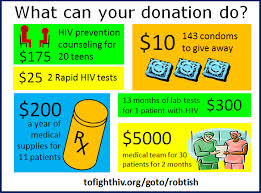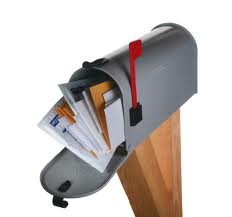I’ve recently signed a contract that has me working with organizations in upstate New York, Vermont and New Hampshire for the next few months. With this new super new exciting challenge, I plan on increasing my use of guest blog posts as a way to make my life work. Hopefully, this will also bring new and exciting points of view to the DonorDreams blog community. I want to thank Gretchen Barry and our friends at NonProfitEasy for today’s contribution. I’ve included Gretchen’s bio at the end of today’s post. Enjoy! ~Erik
4 Ways to Improve Your Direct Mail Strategy
By Gretchen Barry
NonProfitEasy
 The ease of technology now reaches almost all aspects of life, even fundraising. With the help of social media and email and texting, nonprofits are now able to raise money with the click of a button. This shift has been hugely beneficial.
The ease of technology now reaches almost all aspects of life, even fundraising. With the help of social media and email and texting, nonprofits are now able to raise money with the click of a button. This shift has been hugely beneficial.
Easy access equals quick donations.
HOWEVER, the growth in online fundraising techniques does not mean that older methods should fall by the wayside. In particular, direct mail should remain a fundraising method of choice.
There’s a common misconception that direct mail is only for reaching nonprofits’ ages 65+ demographic. There is some validity in this statement. Yes, a powerful contingent of donors prefers direct mail because those in that age range use the online functionalities nonprofits provide with less frequency.
Remember though, younger donors appreciate direct mail just as much.
For young donors, like millennials, snail mail is actually a novelty. The internet has made everything so easy that it takes very little effort to email a friend or send an e-card.
A hand-written note or a personalized, mailed package takes effort and, as a result, shows dedication and care. A direct mail campaign will surprise and connect with the elusive and generous millennial population.
Showing care in your communications is a great way to improve your fundraising effectiveness. Direct mail can make a huge difference in your donor acquisition efforts. People want to feel appreciated for the time and money they’ve invested in your cause.
The four tips below will help ensure your team is implementing the best direct mail strategy around.
1) DECIDE IF THE FUNDRAISER IS RIGHT FOR DIRECT MAIL
This point might seem obvious, but let me explain. Each nonprofit is centered on a mission to serve a needed and worthwhile cause.
It should be easy to convince people that your cause is worth caring about. What’s harder, and what should come into play when deciding whether to use direct mail or not, is knowing if any given fundraising campaign will be one people will feel compelled to donate towards.
Campaigns run the gamut. Some are for new equipment. Others are for events. The scope is broad, but usually you’re asking for funds for a set venture rather than a generic fund.
So you can feel confident about your decision to put the extra effort and money into direct mail fundraisings, ask:
- Is direct mail the best fundraising tool for this campaign?
- How many donors are going to want to participate in this venture?
- What kind of gifts will people give?
- Who, from the mail list, should be contacted?
Once you’ve thought through those questions, you’ll be better equipped to decide if direct mail is the right fit.
Direct mail is not limited to fundraising. Its uses range from sending out educational content to requesting RSVPs for an event. Don’t forget that when weighing if direct mail is the right fit.
Just really think through what you’re asking for. A donor wants to help the cause. She might be more inclined to donate an auction item to your annual gala’s live auction than a check for new office chairs. Both asks are valid, but you have to determine what is important to your constituents.
2) KEEP AN EXCELLENT MAILING LIST
An ineffective mailing list will result in an ineffective campaign.
There are three biggies when it comes to organizing a mailing list:
- Reliable Donors
- Updated Information
- High-Quality Prospects
You want to spend your time and money contacting those who read and respond to direct mail. It’s a good idea to have a donor segment of your prospects and donors who prefer direct mail.
If a donor has a history of never contributing as a result of a hand-mailed campaign, why would you spend the postage on shipping materials to him?
Also think about the time wasted mailing an item to a donor’s former address, or, worse, referring to an outdated detail.
Let’s say Mrs. Smith, formerly Ms. Jones, has moved in with her new husband. If your list doesn’t have this information, your campaign likely won’t reach her. If you do end up getting the correct address, what happens when she’s addressed by her maiden name?
Side-step this problem by making sure your donor database information is current and accurate.
The mishap might not upset her, but using her new, married name would certainly impress her. It would demonstrate care — one of the biggest benefits of direct mail.
3) ATTACH A SELF-ADDRESSED STAMPED ENVELOPE (SASE)
If direct mail’s benefit is a demonstration of effort and email’s benefit is ease, how do you bridge that gap? Just because donors enjoy the care you put into sending a package, it doesn’t mean that they won’t miss the simplicity of donating online.
How do we solve this problem? Send your mailings with an SASE. If your donor has decided to send funds don’t lose them on a technicality. Take the guess work out of replying.
With a SASE a donor simply applies postage and sticks the envelope in the mail. You could even talk to your post office about getting a permit to make the postage on your SASEs pre-paid.
4) TRACK YOUR RESULTS
Your direct mail methods should become more effective over time if you actively work on improvement. What’s the best way to improve your approach? You look at what you’re doing, determine areas of weakness, and focus on lessening those weaknesses.
Take advantage of your experiences by tracking campaign results. That data will provide invaluable insight into potential direct mail mistakes.
Here’s what you should be analyzing:
- Number of responses
- Response type — How many RSVPs? How many no thank yous?
- Donation amounts (if applicable)
- Number of returns to sender
- Comparison of funds raised versus costs to send
After a campaign, you will have the raw data. That raw information will be the foundation of the metrics listed above. Let that data make a difference.
With the way recent technology has revolutionized the nonprofit marketplace, it is difficult to resist the urge to go completely digital. Don’t forget about direct mail though. If you do, you’ll be missing out on an incredibly valuable opportunity.
 Gretchen Barry, Director of Marketing — Gretchen has been a leader in corporate communications and marketing for 20+ years. Gretchen has published numerous articles related to charitable giving and is a passionate advocate for public schools. Gretchen has donated her time to numerous causes including Relay for Life, Girls on the Run, Rebuilding Together, and just recently became involved with the local land trust. Gretchen graduated from the University of Nevada with a degree in English literature.
Gretchen Barry, Director of Marketing — Gretchen has been a leader in corporate communications and marketing for 20+ years. Gretchen has published numerous articles related to charitable giving and is a passionate advocate for public schools. Gretchen has donated her time to numerous causes including Relay for Life, Girls on the Run, Rebuilding Together, and just recently became involved with the local land trust. Gretchen graduated from the University of Nevada with a degree in English literature.

 Without a good list of donors, your year-end mail appeal will fall very flat and likely not raise very much money. Some direct mail experts, such as the folks at
Without a good list of donors, your year-end mail appeal will fall very flat and likely not raise very much money. Some direct mail experts, such as the folks at  On Tuesday, I wrote a post titled “
On Tuesday, I wrote a post titled “ What if your spouse or friend approached you and said, “I am really hungry and I need you get me food and make a meal before I starve.” However, they didn’t tell you:
What if your spouse or friend approached you and said, “I am really hungry and I need you get me food and make a meal before I starve.” However, they didn’t tell you: A few observations:
A few observations: A client called and asked for a little help with their upcoming direct mail solicitation. As a result, all I’ve had on my mind over the last few days is direct mail. So, it only made sense to blog about it today. I’m breaking this post down into small sections, and I’m doing so in the order of highest importance (e.g. the first section has a bigger impact on the performance of your mailing than the second section, etc)
A client called and asked for a little help with their upcoming direct mail solicitation. As a result, all I’ve had on my mind over the last few days is direct mail. So, it only made sense to blog about it today. I’m breaking this post down into small sections, and I’m doing so in the order of highest importance (e.g. the first section has a bigger impact on the performance of your mailing than the second section, etc) Perhaps, the biggest factor in the success of your direct mail appeal is your mailing list. The following are just a few donor segments that I’ve mailed to throughout the years:
Perhaps, the biggest factor in the success of your direct mail appeal is your mailing list. The following are just a few donor segments that I’ve mailed to throughout the years: Your beautifully crafted letter means nothing if the recipient of your mailing doesn’t open the envelope. Right?
Your beautifully crafted letter means nothing if the recipient of your mailing doesn’t open the envelope. Right?






